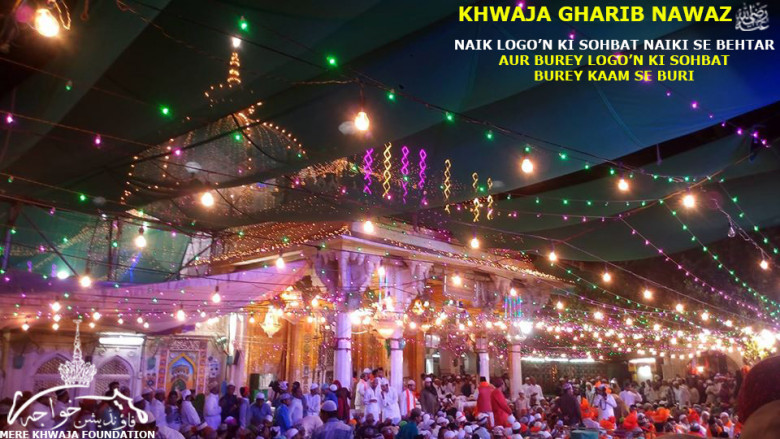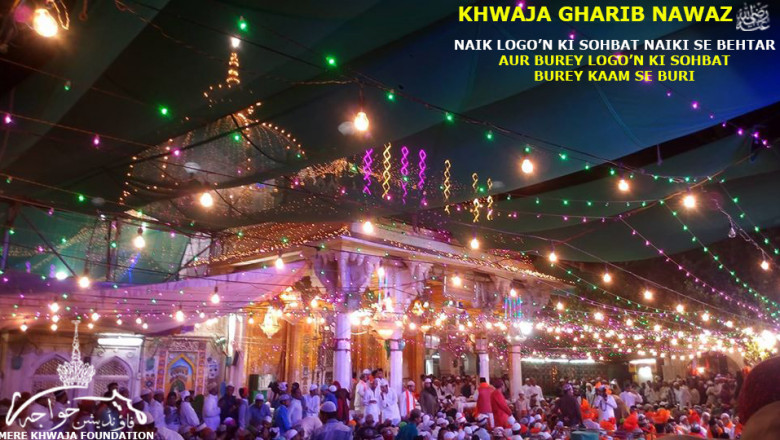views
For sure, one of the most admired Sufi shrines in India, Ajmer Sharif Dargah's tomb, is in Ajmer's centre. Every year, millions of pilgrims visit the Hazrat Khwaja Moinuddin Chishty (R.A.) shrine, referred to as Khwaja Gharib Nawaz. But what makes this Dargah special? Why do countless people from around the globe, irrespective of their religion, ethnicity and country, come to visit the tomb of Khwaja Gharib Nawaz? In this article, we explore the history and spirituality of Ajmer Sharif Dargah Ajmer Rajasthan.
Ajmer Sharif Dargah's Historical Background
Ajmer Sharif Dargah's story started once Hazrat Khwaja Moinuddin Chishty (R.A.) arrived in India in the XII century. He came to India to plant the seeds of peace, love, and spiritual healing. Known for his tolerance, equality, and brotherhood teachings," Khwaja Gharib Nawaz poured love and affection on people of all communities, including Muslims, Hindus and others.
Hazrat Khwaja Moinuddin Chishty (R.A) dedicated his life to serving humanity until death claimed him in Ajmer in 1236 AD. His tomb, known as Ajmer Sharif Dargah, is now a place of worship and a symbol of peace, charity and unity. Ajmer Sharif Dargah remains a popular site where people from all walks of life come together in devotion and faith to seek the saint's blessings.
Here is what Ajmer Sharif Dargah represents spiritually
A Center of Peace and Healing
The teachings of Hazrat Khwaja Moinuddin Chishty (R.A) encourage love, humanity, and universal brotherhood. His presence in Ajmer Sharif Dargah emits peace, drawing people from different parts of the world to capture the tranquillity that the Dargah provides. It is said that the area surrounding the tomb is spiritually charged, which aids in bringing peace to devotees’ troubled hearts.
Those seeking relief, whether for the mind, body, or soul, are said to find solace here. It is believed that Khwaja Gharib Nawaz’s blessings bring healing to ailments, grant peace of mind and clear life obstacles.
A Symbol of Interfaith Unity
The Ajmer Sharif Dargah, located in Ajmer, Rajasthan, is significant for its peculiar ability to accommodate a diverse population coming from different religions. The teachings of Khwaja Gharib Nawaz had no religious boundaries which explains why he is one of the most famous saints of the subcontinent. Dargah is visited by Muslims, Hindus, Sikhs and people of all religions to pay their respects and pray.
Ajmer Sharif Dargah serves as a glance of hope towards love and unity despite the differences in faith. Providing evidence of encouraging coexistence peacefully, interfaith harmony has and will serve as Dargah’s core value.
Claimed Miracles and Wisdom
The Ajmer Sharif Dargah is said to have performed numerous miracles and is believed to have divine intercession. Many pilgrims who come to seek the blessings of the saint and pray at the shrine share experiences of how their requests were fulfilled. From the requirement of personal wishes and appeasing ailments, many pilgrims believe that the Dargah is the source where through Khawja Gharib Nawaz, Allah’s mercy graciously pours down.
The magical reputation of this Dargah has led it to become one of the most visited shrines in the world. The faith and devotion of the pilgrims further energize the region, making it even more holy and powerful as it is showered in divinity.
Offering Prayers and Seeking Blessings
Ajmer Sharif Dargah receives visitors from different places who come to offer their prayers and make offerings of Nazar-o-Niyaz. The Shahi Chadar, Badi Deg, and Choti Deg are the most famous offerings made with good intentions by the devotees to honour the saint and ask for his assistance. These offerings are important as not only do they try to gain the saint’s help, but they also serve in giving and loving those who are deserving.
A person who is humble, kind, and selfless keeps developing a spiritual connection with Khawaja Gharib Nawaz, and these offerings enable them.
The Significance Ajmer Sharif Dargah Has On Society
Ajmer Sharif Dargah’s primary purpose is religious. However, it also engages in community service. Its charitable functions, including Langar (community kitchen) and free services to educate underprivileged children, wonderfully qualify the Shrines as Edifices of Charity. Hazrat Khwaja Moinuddin Chishty (R.A.) used to tell time and again, even in his life, how important it was to assist not just the poor but people who were in any kind of distress.
Till today, the Dargah hasn’t failed to meet the needs of the poorer sections of society when it comes to food, education, and other social services in the spirit of following the saint’s legacy. These programs are beneficial to countless individuals, particularly those who are economically disadvantaged.
Final Thoughts:
The undertones and the concern of Ajmer Sharif Dargah Ajmer Rajasthan go to its history and the internally complex structure of the shrine. However, both of these Ajmer Sharif Dargahs and places of charity unite the entire world around love, peace and affection, drawing attention towards Hazrat Khwaja Moinuddin Chishty (R.A.), also known as Khwaja Gharib Nawaz.
Because of the teachings of this great saint, the Dargah still serves as a symbol of hope for millions in need of healing, blessings, and comfort. Be it for spiritual satisfaction or community service, Ajmer Subar Dargah is both a sacred and life-changing place for everyone.























Comments
0 comment